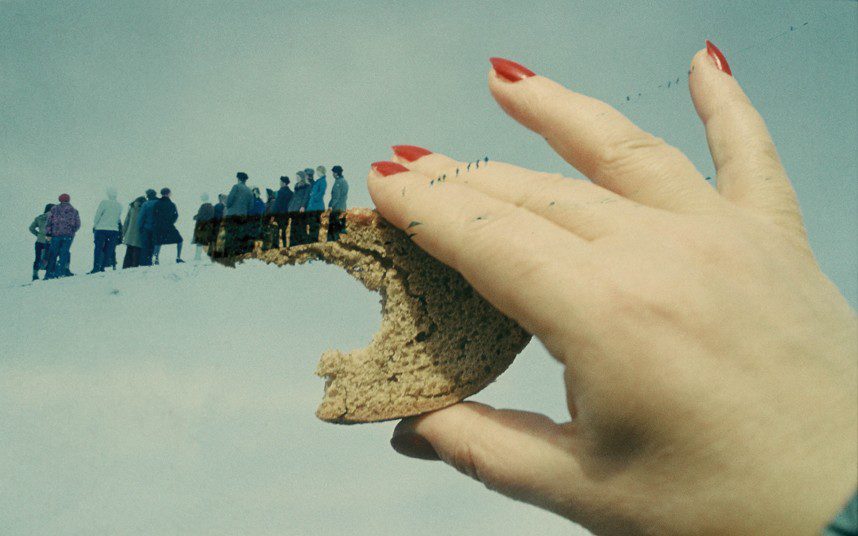The Barbican Centre’s expansive photography exhibition titled “Everything Was Moving: Photography from the 60s and 70s” is a global retrospective that reveals political and social realities of modern history.

Picture: © Boris Mikhailov
Less literal than the title leads you to believe, the show dictates the pace of the journey as we travel back and forth between different periods of time from war, civil rights and apartheid to particular moments in time, as evidenced from more environmental landscapes and social settings of daily life. Full on in both presentation and scope, this exhibition is more reflective of personal narratives of 12 photographers who hail from America, Germany, Mali, South Africa, Japan, Russia, China, India and Mexico. Photography’s role as purveyor of this particular era proves to be the connecting link, each documentarian’s works arranged individually, in varying spaces, some bigger than others. With more than 400 images on deck, this show gives more scope to life under Apartheid in South Africa, as seen from the more well-known, white South African David Goldblatt and lesser- known black South African Ernest Cole. Occupying the lower level gallery, the two are juxtaposed against one another, Goldblatt’s black and white imagery captures his native land, from a more observational yet detached perspective. Speaking more to daily life during this period, Goldblatt shows us both the good and bad, with cultural indicators that signify disparity, as seen in Evening Exodus (1964). Captured at the end of a work day, you can see black people travel by foot to board the train to Soweto (‘densely populated narrow streets’), while white people travel by car to their homes in Johannesburg (‘spacious streets with serene homes’). The artist’s voice is present in both image and accompanying wall text, and in his own words Goldblatt states, ‘nothing in my life made me more sharply aware of the power of Apartheid and of what it meant to be black or white than this simple transition.’ In contrast, Cole’s photography is weighty, more political. The burgeoning regime of Apartheid told from an insider’s perspective. Cole, who was born Ernest Levi Tsoloane Kole, faked his own identity as ‘coloured’ so that he could have the right to work as a journalist, during a time in which many black photographers were being imprisoned. His images are complex and rife with racial injustices and inequalities, and exemplified through his important book House of Bondage (1967) also on view. On the second floor we feel a bit of a jolting shift, when looking at the works of Malian photographer Malick Sidibé. In contrast, his images are more lighthearted looks into the vibrant lives of young Malians. While Mali was independent from French colonial rules, its freedoms were short-lived under the rule of totalitarianism. In spite of late night curfews and opposition to certain types of dress, Sidibé unveils portraits of those inspired by both their independence, as well as American music by artists such as James Brown and The Temptations, reflective in A Yé-Yé posing (1963). In a similar tone, Indian Photographer Raghubir Singh, documents his native country, its people and landscape. His use of colour illustrating social and political change, tradition and modernity, both in his practice and his environment. The rest of the exhibition oscillates between war and Western occupation and imposed influence on Japan and Vietnam, as documented by Japanese Shomei Tomatsu and British Larry Burrows. While each photographer on view could have a solo show in his or her own right, by the show’s conclusion individuality and cohesion becomes less of a necessity. Collectively, these images provide more than a synopsis of societies on the verge. History is nor neat or pre-packaged and the show manages to present an examination of photography’s ability to evoke a sentiment, emotion, and reveal the horrific, the mundane, as well as the beautiful.
Stephanie Baptist is an art producer, editor and occasional writer of contemporary art from africa, diaspora and global perspectives, based in New York.
More Editorial